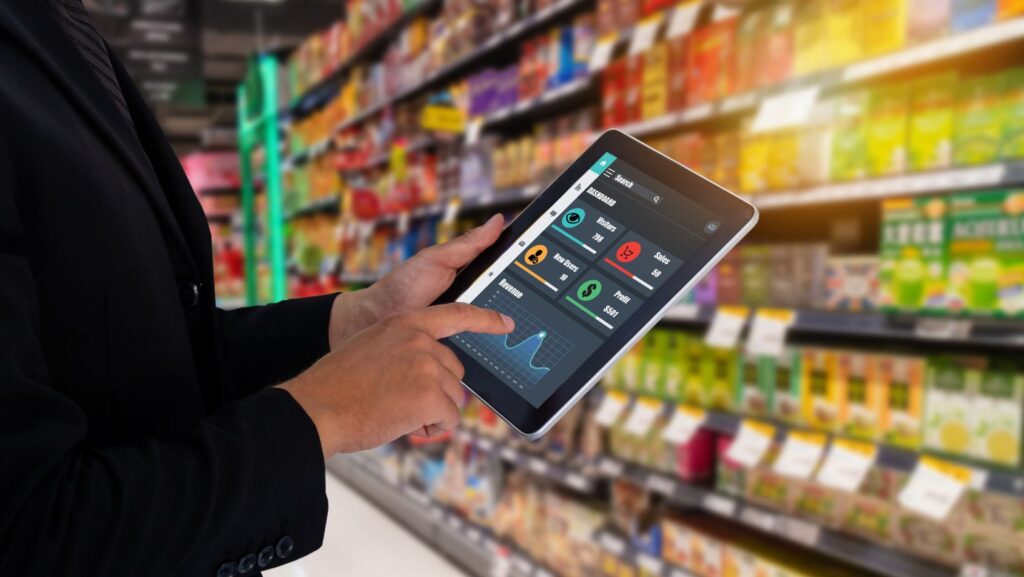In the fast-paced world of retail, staying ahead means keeping a finger on the pulse of technology. As consumers’ expectations evolve, so does the technology that drives customer engagement and streamlines operations. From AI-powered personalization to seamless omnichannel experiences, the landscape of retail is undergoing a transformation that’s as exciting as it is essential for business growth.
Retail Tech Trends
The ongoing evolution in retail technology continues to revolutionize shopping experiences and operational mechanisms within the industry. This section delves into specific developments further intensified by the global events of recent years.
Impact of COVID-19 on Retail Technology
 The COVID-19 pandemic significantly accelerated the adoption of various technologies in the retail sector. Retailers rapidly embraced e-commerce platforms to cater to the surge in online shopping, as consumers preferred to shop from the safety of their homes. Technologies such as contactless payments and virtual fitting rooms gained popularity, enhancing customer convenience and safety. Data analytics played a crucial role in inventory management, helping retailers predict demand patterns more accurately and mitigate supply chain disruptions. The shift towards digital solutions not only addressed immediate challenges but also set a new standard for future retail operations.
The COVID-19 pandemic significantly accelerated the adoption of various technologies in the retail sector. Retailers rapidly embraced e-commerce platforms to cater to the surge in online shopping, as consumers preferred to shop from the safety of their homes. Technologies such as contactless payments and virtual fitting rooms gained popularity, enhancing customer convenience and safety. Data analytics played a crucial role in inventory management, helping retailers predict demand patterns more accurately and mitigate supply chain disruptions. The shift towards digital solutions not only addressed immediate challenges but also set a new standard for future retail operations.
Key Retail Tech Trends to Watch
The retail sector continues to evolve with technology playing a pivotal role. Recognizing the trends set to shape the future is essential for industry leaders.
Artificial Intelligence and Machine Learning
 Within retail, Artificial Intelligence (AI) and Machine Learning (ML) significantly enhance customer experiences and streamline operations. AI-powered chatbots, for example, provide real-time assistance, improving customer service while reducing labor costs. Personalized shopping experiences, geared by AI’s analytical capabilities, suggest products based on consumer behavior and preferences. Inventory management also benefits from AI and ML, helping predict stock levels accurately and assisting in proactive replenishment. This integration of technology not only boosts efficiency but also drives sales by making personalized recommendations to customers.
Within retail, Artificial Intelligence (AI) and Machine Learning (ML) significantly enhance customer experiences and streamline operations. AI-powered chatbots, for example, provide real-time assistance, improving customer service while reducing labor costs. Personalized shopping experiences, geared by AI’s analytical capabilities, suggest products based on consumer behavior and preferences. Inventory management also benefits from AI and ML, helping predict stock levels accurately and assisting in proactive replenishment. This integration of technology not only boosts efficiency but also drives sales by making personalized recommendations to customers.
Augmented Reality (AR) and Virtual Reality (VR) are transforming the consumer shopping experience in retail by providing immersive interactions. AR apps allow customers to visualize products in real-time within their own environments, which is especially useful in furniture and home decor sectors. VR takes customer engagement to another level by allowing them to navigate virtual stores or try on clothes virtually from the comfort of their homes. These technologies not only elevate the shopping experience but also reduce return rates by helping customers make better-informed decisions.
Internet of Things (IoT) and Smart Stores
IoT technology is instrumental in creating smart retail stores that offer enhanced shopping experiences and operational efficiency. Through IoT, devices and sensors connect and communicate in real time, enabling features like smart shelves that monitor product levels and provide automated restocking alerts. Smart carts can guide shoppers through stores for an efficient shopping journey, and personalized discounts can be sent to mobile devices as customers pass by products. Integrating IoT into retail operations helps in managing resources more effectively and offers personalized experiences to customers, boosting satisfaction and loyalty.
Future Predictions for Retail Technology
 The dynamic landscape of retail technology shows no signs of slowing down. As retailers continue to navigate the challenges and opportunities presented by new tech, the focus will likely remain on enhancing customer experience and operational efficiency. The integration of AI, ML, AR, VR, and IoT will not only refine consumer interactions but also streamline back-end processes. This will empower retailers to offer more personalized and engaging shopping journeys.
The dynamic landscape of retail technology shows no signs of slowing down. As retailers continue to navigate the challenges and opportunities presented by new tech, the focus will likely remain on enhancing customer experience and operational efficiency. The integration of AI, ML, AR, VR, and IoT will not only refine consumer interactions but also streamline back-end processes. This will empower retailers to offer more personalized and engaging shopping journeys.
Looking ahead, the adoption of these technologies will become more widespread as businesses seek to meet evolving consumer expectations and strengthen their market position. Retailers who invest in these innovations and successfully overcome integration and adoption challenges will be well-equipped to lead in a highly competitive environment. They’ll not only see improved efficiency and customer satisfaction but also gain valuable insights that can propel their businesses forward in the digital age.

